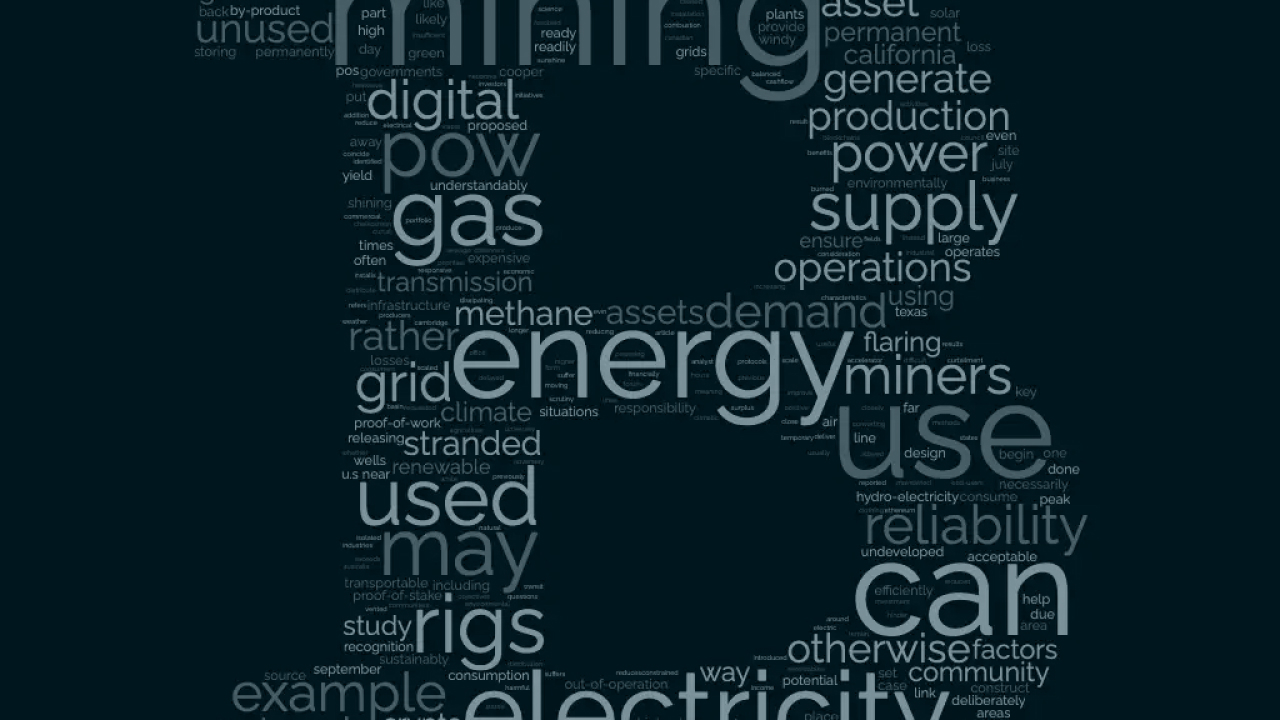In California in springtime, the sun is shining, the weather is often windy, and water levels are at their highest from snow-melt from the mountains, all providing plentiful sources of renewable energy. At the same time, the climate is mild, reducing the need for air conditioning or heating and resulting in lower energy consumption.[i] To balance supply and demand, electricity generation is scaled back and potential green energy is unrealised.
“Crypto mining, by design, can put that overabundance that would otherwise go unused, into productive use.” Evin Cheikosman, World Economic Forum.[ii]
Digital assets using proof-of-work (PoW) consensus methods have understandably drawn scrutiny on whether mining is an acceptable use of energy. Some blockchains, such as Ethereum, have resolved this by moving from PoW to proof-of-stake (PoS), which significantly reduces energy use. There is also increasing recognition that PoW mining, like that used by Bitcoin, can be done more sustainably – and use of energy this way may even provide benefits. The focus of these initiatives is on the sources of energy used for mining including curtailed, stranded, and wasted energy.
Curtailment is where production exceeds demand and generation must be reduced to maintain grid reliability. Curtailment may be necessary system-wide, meaning over a large area, or locally, where there is insufficient transmission infrastructure to deliver electricity from where it is produced to where it can be used.
Curtailment is a particular consideration for renewable energy because environmental factors result in higher supply at times of lower demand, either seasonally or intraday (the lights go on when the sun goes down), and where the generation is constrained by geographic and climatic factors. For example, hydroelectricity can be generated only near water sources with specific characteristics and solar power plants are most useful where sunshine hours per day are high. These are not always close to the population centres that consume electricity, or the locations of commercial or industrial demand. Storing energy at scale is difficult and expensive,[iii] and line losses impact transmission over distance.
In the California case study, electricity production is deliberately reduced to balance demand and maintain grid reliability. Rather than curtail this energy, it could be used to power digital asset mining using energy which would otherwise not be generated at all.
Similar considerations apply to waste and stranded energy which are often in locations where demand is low or non-existent. This energy can be most efficiently used close to its source, such as for bitcoin mining.
Crypto-asset mining that installs equipment to use vented methane to generate electricity for operations is more likely to help rather than hinder U.S. climate objectives… It can yield positive results for the climate, by converting the potent methane to CO2 during combustion. Climate and Energy Implications of Crypto-Assets in the United States, White House Office of Science and Technology Policy, September 2022
Waste energy is produced as a by-product of other activities. For example, at oil and natural gas wells, methane is produced. It is often too expensive to construct permanent pipelines or electricity transmission networks from remote oil and gas fields to consumers, and releasing the methane is environmentally harmful. Usually, it is burned on site as gas flaring. Methane is also produced from other industries, such as agriculture, landfill, and sewage treatment.
Instead of dissipating the energy, digital asset mining rigs can be installed at source. One study by Cambridge University identified that gas flaring could power the bitcoin network around seven times.[iv]
Using the waste energy this way improves environmental outcomes. Combustion of waste gases in generators connected to Bitcoin mining rigs results in an estimated 63% reduction in emission of CO2 equivalents compared with flaring.[v]
Stranded energy assets are in locations where the distribution network is too far away for generation to be financially viable. Permanent stranding may result from remote terrain or undeveloped infrastructure, situations where mining rigs could generate revenue for isolated communities.
Energy assets may also be temporarily stranded. For example, a Canadian oil and gas company planned to set up bitcoin mining rigs near a previously out-of-operation gas well in Cooper Basin, Australia. The wells were ready to begin production but the pipeline to transport the gas was delayed. The company proposed the installation of mining rigs to generate income and improve cashflow until the pipeline was in place.[vi]
Provenance in the energy “supply chain”
All participants in the digital asset community must respond to the priorities of the society in which they operate. For Bitcoin and other PoW protocols, miners have a key responsibility. In the same way that responsible producers of clothing or shoes ensure their supply chains use responsible rather than exploitative labour, digital asset miners could take responsibility for their energy sources and use. By powering mining using surplus renewables or energy that would otherwise be unused, concerns from investors and the wider community about suitable use of energy will be allayed, and PoW assets can still form part of a responsible investment portfolio.
[i] Zodia Markets analysis of California ISO data 2022 (http://www.caiso.com/market/Pages/ReportsBulletins/RenewablesReporting.aspx#MonthlyRenewables), US Energy Information Administration (https://www.eia.gov/todayinenergy/detail.php?id=42915), University of San Diego (https://www.sandiego.edu/soles/hub-nonprofit/initiatives/dashboard/electricity.php)
[ii] https://www.weforum.org/agenda/2022/06/crypto-sustainability
[iii] https://www.gatesnotes.com/energy/it-is-surprisingly-hard-to-store-energy
[iv] https://ccaf.io/cbeci/index/comparisons
[v] CO2 equivalents provides a measure in which greenhouse gases are converted to the equivalent amount of carbon dioxide based on their global warming potential. https://www.crusoeenergy.com/digital-flare-mitigation
[vi] https://cointelegraph.com/news/bengal-energy-to-mine-bitcoin-using-stranded-wells-in-aussie-outback






